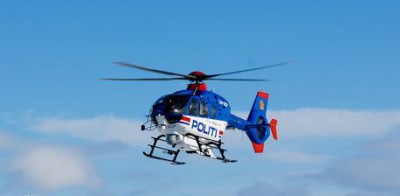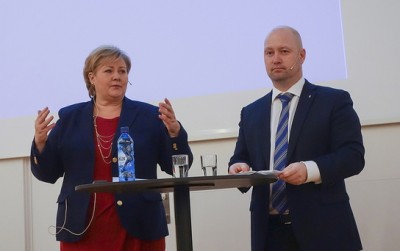Five years after Norwegian police were all but ridiculed over their inability to handle attacks on the government and its ruling party’s summer camp on the island of Utøya, Norway remains deeply split over how or even whether the police and military are prepared for any new ones. The recent rash of attacks and civilian unrest elsewhere in Europe makes the issue highly relevant, and the population uneasy.

Newspaper VG reported Monday morning that a new public opinion poll indicates that around half the population does not think the Norwegian police are well-enough prepared to handle a new national emergency. The poll showed that 33 percent responded negatively to the question, while 30 percent were unsure. That left only around 37 percent confident that police could sufficiently respond.
A flurry of other articles in Norwegian media, written in advance of Friday’s upcoming fifth anniversary of the attacks on July 22, 2011, have pointed up shortcomings within both the police and the military. They were supposed to start working in a much more coordinated fashion, after a damning report was released on their lack of preparedness a year after the attacks.
VG reported last week, however, that there’s still a lack of helicopters, for example, to rush even Norway’s most highly trained “Delta” anti-terror police (Beredskapstroppen) to the scene of an attack. Just as terrified teenagers on Utøya had to wait hours for help, as a lone gunman roamed the island shooting at them, new terror targets and victims may need to wait as well.

Police in Oslo finally got their own helicopter in standby readiness a few years after the July 22 attacks, but VG reported that the Delta unit still needs to borrow a helicopter from the military. Even though the special unit of terror-trained police has been considerably strengthened, its members still rely on scheduled airline service when they move around the country to train. VG estimated it would therefore take between 195 and 215 minutes for its members to get from their base in Oslo to Stavanger, Bergen and Trondheim, and 295 minutes to get to Tromsø in Northern Norway. By that point, any terror attacks would likely be over.
Ole Vidar Dahl of the Oslo Police District, who leads the national unit that lends resources to other areas needing help, told VG the response time could be reduced if the Delta unit had helicopters at their disposition with transport capacity. He stressed that outlying districts can rely on the unit, but because travel time is currently long, they can’t rely on help in acute situations. Gustav Landro of the Hordaland Police District based in Bergen confirmed that the Delta unit “is not our primary resource in the acute phase. We depend on our own capacity, and they support us when they get here.”
Newspaper Dagsavisen, meanwhile, has reported that local police also lack new helicopters, with the Christian Democrats party urging the military to let the police use their helicopters in peacetime. Norwegian police have only two helicopters of their own and have asked for at least three more. “I think we must be humble and say that we haven’t come as far with improving preparedness as we should have,” said Dahl.

Newspaper Aftenposten reported earlier this month that there also has been no progress on calls to forbid semi-automatic weapons in Norway, like those used by the July 22 gunman. He was able to legally purchase his weapons in Norway, claiming he intended to use them for deer hunting. A ban on semi-automatic weapons has been opposed by Norway’s national hunting association and Members of Parliament, many of whom are hunters themselves, have been unable to agree on full prohibition.
Justice Minister Anders Anundsen of the conservative Progress Party says he’s taking all the criticism over Norway’s ongoing lack of preparedness seriously, but claims the country has never been as well-prepared as it is now. He’s under pressure not just from opposition poiliticians but from his own party as well, which had hurled criticism at the former Labour-led left-center government over the poor police response in 2011 before taking over responsibility themselves in 2013.
Jan Arild Ellingsen, a member of the justice committee for the Progress Party, is among those impatient for improvement. “I see the biggest weakness as being the lack of new police helicopters,” Ellingsen told Dagsavisen. “That’s just not good enough.” He said he’d be in favour of instructing Anundsen to acquire helicopters if the government doesn’t order them at its own initiative.

State police director Odd Reidar Humlegård, who reports to Anundsen, told Aftenposten on Monday that he “thinks about July 22 every day” and works with its after-effects every day as well. He took over as state police chief after politicians in 2012 expressed a lack of confidence in the earlier police administration. Humlegård insists that improving preparedness “and strengthening our weaknesses” is a high priority.
“A lot has happened in the past five years,” Humlegård said. “A similar incident (attack) would be handled very differently today. Norwegian police are prepared now, in an entirely different way.” Anundsen, the justice minister, says the same, as does Prime Minister Erna Solberg, but she also accepts the criticism that preparedness still isn’t as good as it should be.
She told VG last week that from the time her government assumed power in 2013, construction of an actual “preparedness center” where training and stand-by operational forces would be consolidated, “has been a nightmare for us.” The site chosen by the former government for the center, at Alna in Oslo, proved to be too small. There was a lack of planning behind the center, according to Solberg, and the entire concept behind the center had been “too hastily” put together.
“We probably should have scrapped the Alna project (which had been proposed by former Justice Minister Grete Faremo in the Labour government led by Jens Stoltenberg) as soon as we took over,” Solberg told VG. “We should have said we’d start over when we saw the work that had been done, but we have to have an alternative.”
She said everyone has had a desire to get a preparedness center in place as quickly as possible, and that her government is learning from earlier and its own mistakes. She admitted that projects like new helicopters for the police have been sidelined in the process. She noted, though, that the military’s Bell helicopters will now be stationed at the Rygge airport south of Oslo, which is about to be closed to civilian airline traffic after Ryanair pulled out, and that can help improve readiness.
“We accept criticism that we worked too long with the Alna alternative,” Solberg told VG. “If we had ended that work earlier, we would have had a new preparedness center sooner.” She repeated that the government has learned from its mistakes.
“Many of the problems we had on July 22, 2011 had been pointed out earlier,” she told VG. She said she can promise that emergency response to anything like the attacks five years will be much better now. She said the government is responding to every point in the report on the lack of preparedness issued in 2012.
“We are better prepared to handle a terrorist attack today than we were five years ago,” Solberg said. “We can’t say everything is in order, but we must never rely on that either.”
newsinenglish.no/Nina Berglund

